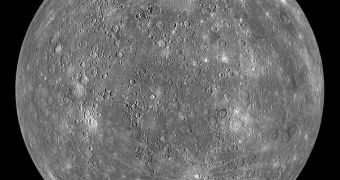Volcanoes are relatively well-understood here on Earth, but this is not the case for other locations in the solar system. According to a series of new studies, one particular volcanic complex on Mercury, the closest planet to the Sun, may have erupted for a billion years, perhaps even more.
Traces of this active area were first glimpsed by the NASA MErcury Surface, Space ENvironment, GEochemistry, and Ranging (MESSENGER) spacecraft during its first flyby of the nearby world, in 2008. Before entering orbit around the planet, the probe carried out three flybys, in 2008 and 2009.
Astronomers first observed the volcano in the planet's northern hemisphere because it resembled a kidney-shaped depression. This interesting layout captured the attention of scientists, who set out to determine how it formed in this manner, Space reports.
The surface of Mercury features numerous weird structures, such as very smooth plains. Geologists argue that intense lava flows from within the planet may be responsible for these structures. Eruptions may have been caused by the planet's close orbit around the Sun, at just 58 million kilometers (36 million miles).
Even in this weird landscape, the kidney-shaped depression captured the attention of astronomers, primarily because it was surrounded by a coating of reflective, bright material that cannot be found anywhere else on the planet. Later, this was established to be pyroclastic debris from a volcano.
As experts took a closer look, after MESSENGER entered orbit around Mercury, they determined that the formation was in fact a collection of multiple layers, something that was eerily similar to a type of volcano on Earth called a compound volcano.
The spacecraft's unique vantage point allowed experts to discover numerous small impact craters within the structure of the volcano, which then enabled them to estimate the formation's age with a relatively high degree of certainty.
Overall, the volcanic plumbing underneath this interesting feature may have fueled eruptions for more than a billion years. When compared to the fact that a 1-million-year-old volcano here on Earth is considered ancient, the age of the Mercurial feature puts things in a new perspective.
Geologists will now attempt to figure out the intricate mechanisms and subsurface processes that enabled the core of Mercury to fuel eruptions for such a long time at this location.

 14 DAY TRIAL //
14 DAY TRIAL //